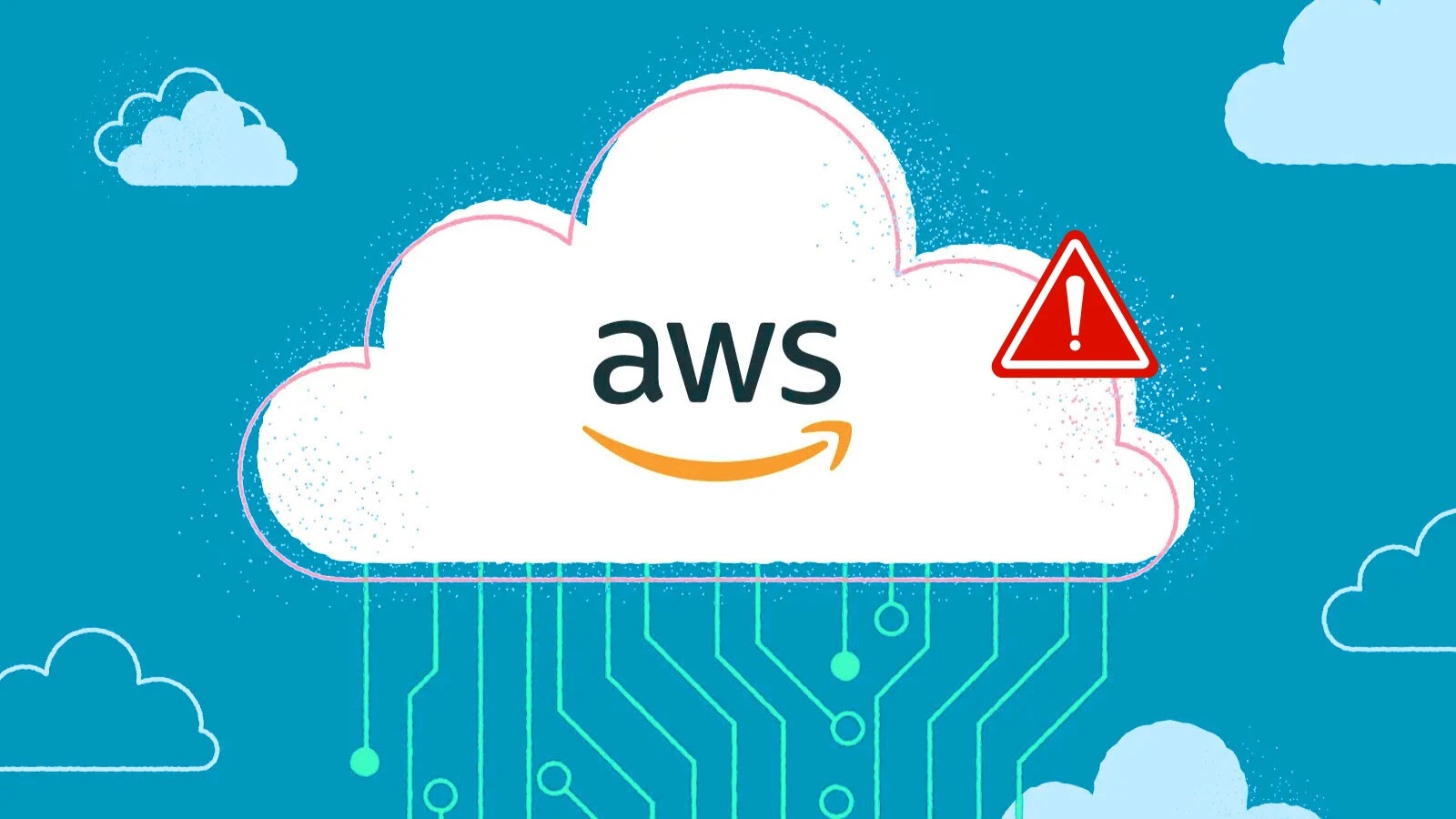
AWSDoor – New Persistence Technique Allows Attackers to Hide Malware Within AWS Cloud Environment
Unmasking AWSDoor: A New Era of Cloud Persistence
The digital frontier of cloud computing, while offering unparalleled flexibility and scalability, also presents a constantly evolving battleground for cybersecurity. As organizations increasingly migrate their critical operations to platforms like Amazon Web Services (AWS), so too do threat actors sharpen their tactics. A new and particularly insidious tool, dubbed AWSDoor, has recently emerged, signaling a significant shift in how attackers establish and maintain long-term access within cloud environments. This technique allows adversaries to hide in plain sight, eschewing traditional malware deployments in favor of subtle, yet powerful, persistence methods.
What is AWSDoor? The Silent Cloud Intruder
AWSDoor represents a sophisticated approach to cloud persistence, primarily focusing on exploiting AWS Identity and Access Management (IAM) and various resource-based policies. Unlike conventional attacks that rely on deploying executables or scripts to compromise endpoints, AWSDoor automates a range of techniques to embed itself within an AWS account’s configuration. This means that instead of finding malicious files, security teams might be looking at subtly altered IAM roles, revised resource policies, or new access configurations that grant an attacker persistent, often unnoticed, control.
The core danger of AWSDoor lies in its ability to blend in with legitimate cloud operations. By manipulating core AWS services and configurations, attackers can create backdoors that appear to be part of the regular infrastructure, making detection incredibly challenging for traditional security tools that are not specifically tuned for cloud-native threats.
The Mechanics of Stealth: How AWSDoor Operates
AWSDoor leverages the very flexibility of AWS to its advantage. Its operational mechanics can be broken down into several key areas:
- IAM Role Manipulation: Attackers can modify existing IAM roles or create new ones with overly permissive policies. These roles can then be assumed by external entities or compromised resources, granting unwarranted access to sensitive data or control over critical services. For instance, a seemingly harmless role might be granted permissions to create new users or modify other IAM policies, creating a cascading effect of compromise.
- Resource Policy Exploitation: Many AWS resources, such as S3 buckets, EC2 instances, and Lambda functions, have resource-based policies that define who can access them. AWSDoor can automate the modification of these policies to grant external AWS accounts or rogue IAM principals access, effectively creating hidden entry points. An S3 bucket policy might be subtly altered to allow an attacker’s external AWS account to list or retrieve objects, bypassing traditional network perimeter controls.
- Cross-Account Access: A particularly potent technique involves establishing cross-account access. AWSDoor can configure trust policies between AWS accounts, allowing an attacker operating from their own malicious AWS account to assume roles or access resources in a compromised target account. This creates a highly stealthy persistence mechanism, as the attacker’s activities originate from an external, seemingly legitimate, AWS environment.
- Event-Driven Persistence: Attackers could also leverage AWS services like EventBridge or Lambda to trigger malicious actions based on specific AWS events. For example, a Lambda function could be configured with a backdoor to react to administrative actions, re-establishing persistence if it’s ever removed.
The Impact: Why AWSDoor is a Game Changer
The emergence of AWSDoor signifies a dangerous evolution in cloud attacks due to several critical factors:
- Reduced Attacker Footprint: By avoiding traditional malware, attackers dramatically reduce their digital footprint, making forensic analysis more difficult and detection less likely by endpoint detection and response (EDR) solutions.
- Increased Persistence: IAM and resource policy changes are persistent by nature. Once established, they can survive reboots, instance recreation, and even some security remediations if not thoroughly identified and revoked.
- Evasion of Traditional Security Controls: Perimeter firewalls, antivirus software, and network intrusion detection systems are largely ineffective against these cloud-native persistence techniques, as the attack operates within the cloud’s control plane.
- Subtle Detection Challenges: Identifying the subtle changes AWSDoor makes requires deep expertise in AWS security configurations and continuous monitoring of IAM activities and resource policies, often beyond the scope of many organizations.
Remediation Actions: Hardening Your AWS Defenses
Addressing the threat posed by AWSDoor requires a proactive and comprehensive approach to AWS security. Organizations must shift their focus from purely network-centric security to a cloud-native security posture.
- Implement Least Privilege: Regularly review and enforce the principle of least privilege across all IAM roles and users. Grant only the permissions absolutely necessary for a task. Use AWS Access Analyzer to identify unintended external access to your resources.
- Monitor IAM Activity: Leverage AWS CloudTrail to continuously monitor all IAM actions (e.g., creation, modification, deletion of roles, policies, and users). Implement alerts for suspicious IAM activities, such as changes to critical policies or new cross-account role assumptions.
- Regularly Audit Resource Policies: Periodically audit resource-based policies on critical AWS services like S3, Lambda, and KMS to ensure no unauthorized external access or overly permissive grants are present. Tools like AWS Config can help automate this.
- Utilize AWS Security Services:
- AWS Identity and Access Management Access Analyzer: Proactively identify resource policies that grant access to external entities, reducing the risk of unintended access.
- Amazon GuardDuty: Enable GuardDuty to detect unusual and potentially unauthorized activity in your AWS accounts, including suspicious IAM access patterns.
- AWS Security Hub: Centralize and automate security checks, including those related to IAM best practices and resource configurations.
- Implement Multi-Factor Authentication (MFA) Everywhere: Enforce MFA for all AWS accounts, especially root accounts and administrative users.
- Adopt a Strong Cloud Governance Framework: Establish clear policies and procedures for creating, modifying, and deleting IAM roles and resource policies. Implement change management and peer review for all significant security-related changes.
- Employee Training and Awareness: Educate IT and development teams on the importance of secure cloud configurations and the risks associated with overly permissive IAM policies.
Tools for Detection and Mitigation
Leveraging specialized tools can significantly enhance your ability to detect and mitigate AWSDoor-like threats:
| Tool Name | Purpose | Link |
|---|---|---|
| AWS CloudTrail | Logging and monitoring of API calls and AWS service events to detect suspicious IAM changes. | https://aws.amazon.com/cloudtrail/ |
| AWS Config | Assessing, auditing, and evaluating the configurations of your AWS resources, including policy changes. | https://aws.amazon.com/config/ |
| AWS Identity and Access Management Access Analyzer | Identifies resources that are shared with an external entity outside of your account. | https://aws.amazon.com/iam/features/access-analyzer/ |
| Amazon GuardDuty | Intelligent threat detection service that monitors for malicious activity and unauthorized behavior. | https://aws.amazon.com/guardduty/ |
| Prowler | Open-source tool for AWS security best practices assessments, audits, hardening, and incident response. | https://github.com/prowler-cloud/prowler |
Key Takeaways: Fortifying Your Cloud Posture
The emergence of AWSDoor underscores a critical evolution in the threat landscape for cloud environments. Attackers are moving beyond traditional malware to exploit the very configuration and management features of cloud platforms like AWS. This new persistence technique leverages IAM and resource-based methods to hide in plain sight, making traditional security measures less effective.
Protecting against such sophisticated threats demands a deep understanding of cloud security principles, continuous vigilance over AWS configurations, and the strategic deployment of native AWS security services. By adopting a proactive security posture, enforcing least privilege, and rigorously monitoring all IAM and resource policy changes, organizations can significantly strengthen their defenses against tools like AWSDoor. The battle for cloud security is ongoing, and staying ahead requires constant adaptation and a commitment to robust cloud security practices.





